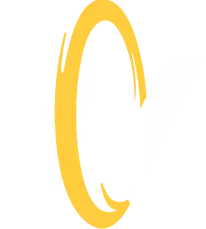Dynamic NFTs: Revolutionizing the Blockchain Landscape
NFTs, or non-fungible tokens, have come a long way from static JPEGs and digital collectibles.NFTs, or non-fungible tokens, have come a long way from static JPEGs and digital collectibles. A new class of NFTs, known as Dynamic NFTs (dNFTs), is reshaping the landscape by incorporating interactivity, adaptability, and real-time data into the blockchain ecosystem. These tokens, unlike their static counterparts, can change attributes or behaviors based on predefined conditions or external inputs.
What Are Dynamic NFTs?
Dynamic NFTs are digital assets programmed to update or evolve in response to specific triggers. While traditional NFTs are immutable after minting, dNFTs leverage smart contracts to interact with real-world events or user interactions. These changes can include:
- Visual updates (e.g., changing colors or designs)
- Metadata adjustments (e.g., updating stats or attributes)
- Ownership dynamics (e.g., evolving rewards or functionalities)
For example, a gaming character minted as a dynamic NFT could grow stronger or unlock new abilities based on the player’s in-game achievements.
Applications in Gaming
Dynamic NFTs are set to revolutionize the gaming industry by introducing a more immersive and personalized experience. Key use cases include:
-
Evolving In-Game Assets
Gamers can mint characters, weapons, or vehicles as dNFTs, which improve or change over time based on performance. For instance:- A sword gains more power as the player completes quests.
- A race car's design adapts to the player’s milestones, such as achieving a specific speed or rank.
-
Player-Driven Economies
Dynamic NFTs allow players to create and trade custom assets, fostering a decentralized in-game economy. Players could also merge assets to create rarer or more powerful NFTs, driving demand and value. -
Cross-Platform Integration
Imagine a dynamic NFT character that retains its progress across multiple games or even metaverse platforms. This interoperability could redefine user engagement and asset utility.
Real-World Applications
Beyond gaming, dNFTs are making waves in industries like real estate, sports, and supply chain management:
-
Digital Identity
A dynamic NFT could act as a digital passport, updating in real-time with a user’s credentials, achievements, or certifications. For instance:- A professional certification NFT that tracks continuous education credits.
- An athlete’s NFT card that updates stats with real-world performance data.
-
Art and Collectibles
Dynamic NFTs open up new creative possibilities for artists:- Artworks that transform based on external factors like time, weather, or viewer interactions.
- Collectibles that evolve based on community milestones or events.
-
Tokenized Real Estate
Dynamic NFTs can represent real estate properties, updating metadata to reflect changes like ownership, renovations, or market valuation. -
Supply Chain Transparency
Using dNFTs, businesses can track and update product histories, ensuring transparency and accountability in the supply chain. For example:- A coffee bean’s journey from farm to consumer, with each step dynamically updated on its NFT metadata.
Technical Foundation
Dynamic NFTs rely on advancements in smart contract programming and off-chain oracles to enable their adaptive nature. These oracles feed real-world data (e.g., sports scores, weather conditions) into the blockchain, triggering changes in the NFT’s metadata. Platforms like Chainlink and ChainIDE are leading the way in integrating oracles with dynamic NFTs.
Challenges and Opportunities
While the potential of dynamic NFTs is immense, they come with challenges:
- Cost and Scalability: Real-time updates can increase transaction costs on the blockchain.
- Security Risks: The integration of external oracles opens the door to vulnerabilities.
- Adoption Barriers: Developers and businesses need tools and education to implement dNFTs effectively.
Opportunities, however, outweigh these challenges. As blockchain ecosystems grow, solutions like layer-2 scaling and decentralized oracle networks promise to make dynamic NFTs more accessible and efficient.
Future Outlook
The rise of dynamic NFTs signifies a major shift in the way we interact with blockchain assets. With continuous innovation, these adaptable tokens could:
- Enhance interoperability across gaming platforms and metaverses.
- Revolutionize ownership models in various industries.
- Enable new forms of storytelling and user engagement.
As we move forward, the synergy between dNFTs, artificial intelligence, and the Internet of Things (IoT) is expected to unlock unprecedented possibilities. For instance, imagine a digital pet NFT that evolves based on your real-world habits, fitness goals, or environmental data.
Conclusion
Dynamic NFTs are pushing the boundaries of what’s possible in the digital and physical worlds. By blending real-time adaptability with blockchain’s transparency and security, dNFTs are set to become a cornerstone of Web3 innovation. Whether you’re a gamer, artist, or entrepreneur, the evolution of dynamic NFTs opens up endless opportunities to engage, create, and innovate in the digital frontier.
